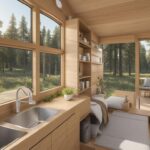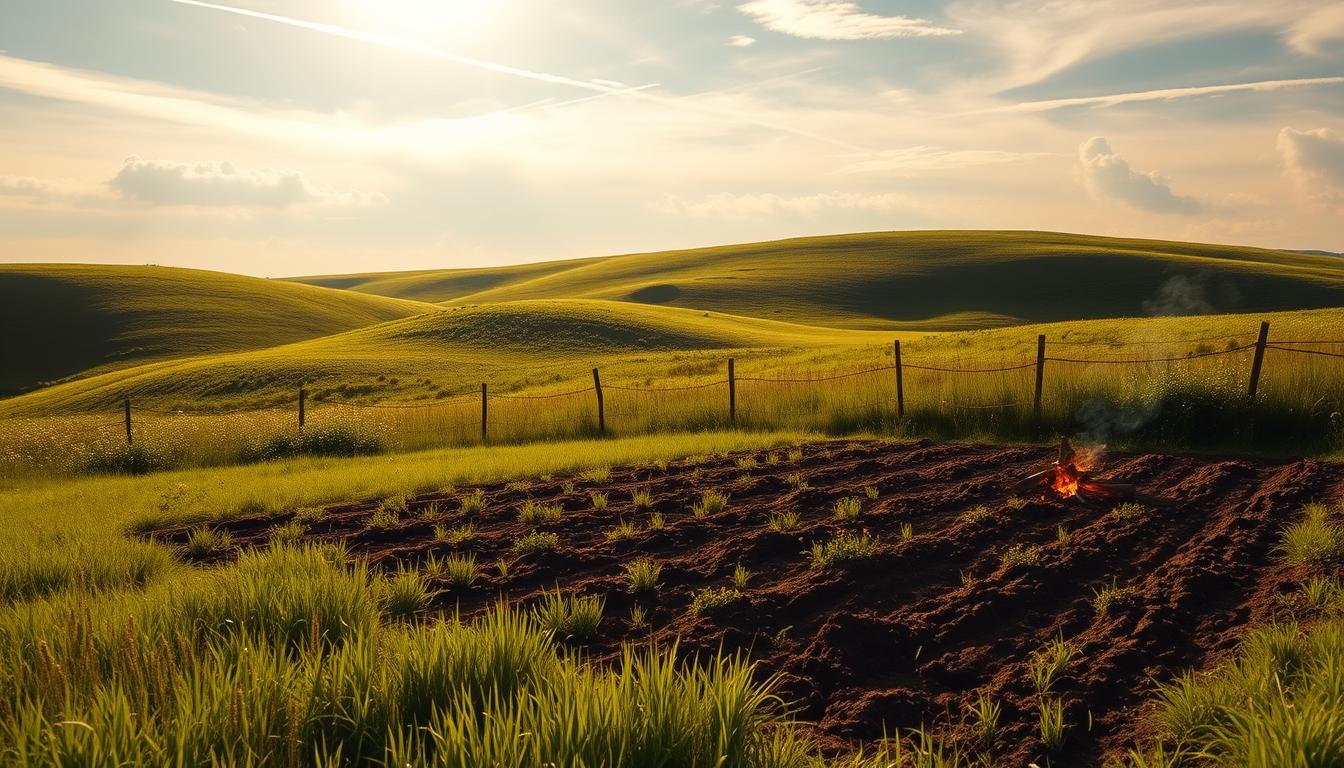Are you considering building a tiny house on land? This article provides comprehensive insights into the sustainable techniques and considerations necessary for this endeavor.
What You’ll Learn About Building a Tiny House on Land
- Understanding regulations and zoning: Importance of complying with local building codes and navigating land use restrictions.
- Finding and evaluating land: Factors to consider when searching for suitable land and assessing soil quality and environmental impact.
- Sustainable living: Designing for the land, infrastructure and utilities, long-term sustainability, and ethical considerations.
The trend of tiny house living has gained momentum in recent years as more people seek minimalistic, sustainable, and affordable housing options. Building a tiny house on land offers an opportunity to embrace a simpler lifestyle while minimizing environmental impact. However, this endeavor comes with its own set of benefits and challenges.
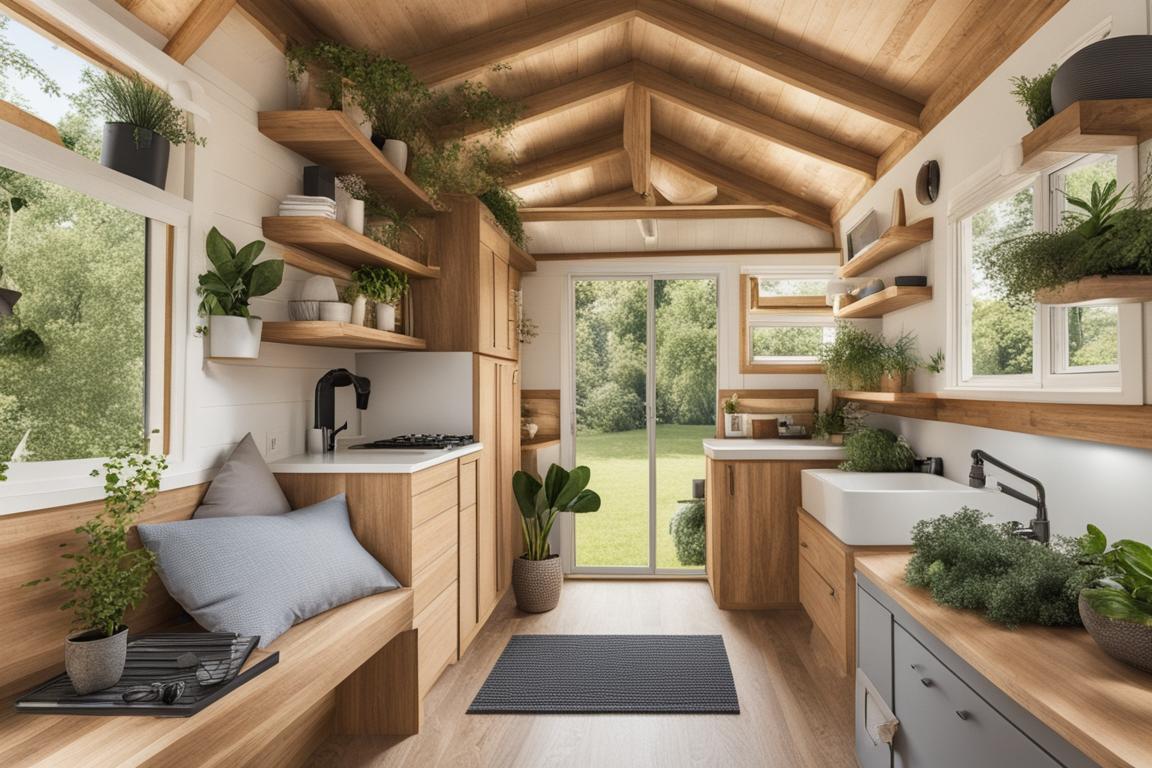
Overview of the growing trend of tiny house living
Tiny house living has captured the imagination of individuals and families looking to downsize their living spaces and embrace a more sustainable lifestyle. The appeal lies in the freedom from excessive material possessions, reduced environmental footprint, and the financial freedom it offers. With the rising housing costs and increasing awareness of environmental issues, the concept of tiny house living has become a popular choice for those seeking a more intentional way of living.
Brief introduction to the benefits and challenges of building a tiny house on land
Building a tiny house on land presents a unique set of advantages, including the ability to customize a living space, lower construction costs, and the opportunity to live closer to nature. However, challenges such as navigating local regulations, finding suitable land, and setting up essential utilities need to be carefully considered. In this article, we will explore the sustainable techniques and considerations involved in building a tiny house on land.

Understanding Local Regulations and Zoning
Importance of understanding and complying with local building codes and zoning regulations
Before embarking on the journey of building a tiny house on land, it is crucial to thoroughly understand and comply with local building codes and zoning regulations. These regulations dictate the size, location, and features of the tiny house, as well as the type of land where it can be built. Non-compliance can lead to legal issues and hefty fines, making it essential to navigate these regulations effectively.
Process of obtaining permits and approvals for building a tiny house on land
Obtaining the necessary permits and approvals for building a tiny house on land involves a detailed process that varies from one location to another. This may include submitting architectural plans, conducting soil tests, and obtaining inspections at different stages of construction. Navigating this process requires patience, attention to detail, and a thorough understanding of local regulations.
Navigating land use restrictions and considerations
Land use restrictions, such as conservation easements and environmental protections, can significantly impact the feasibility of building a tiny house on land. It is essential to consider these restrictions and their implications on the design and construction of the tiny house. Additionally, factors such as setback requirements, easements, and land covenants need to be carefully evaluated to ensure compliance and a smooth building process.
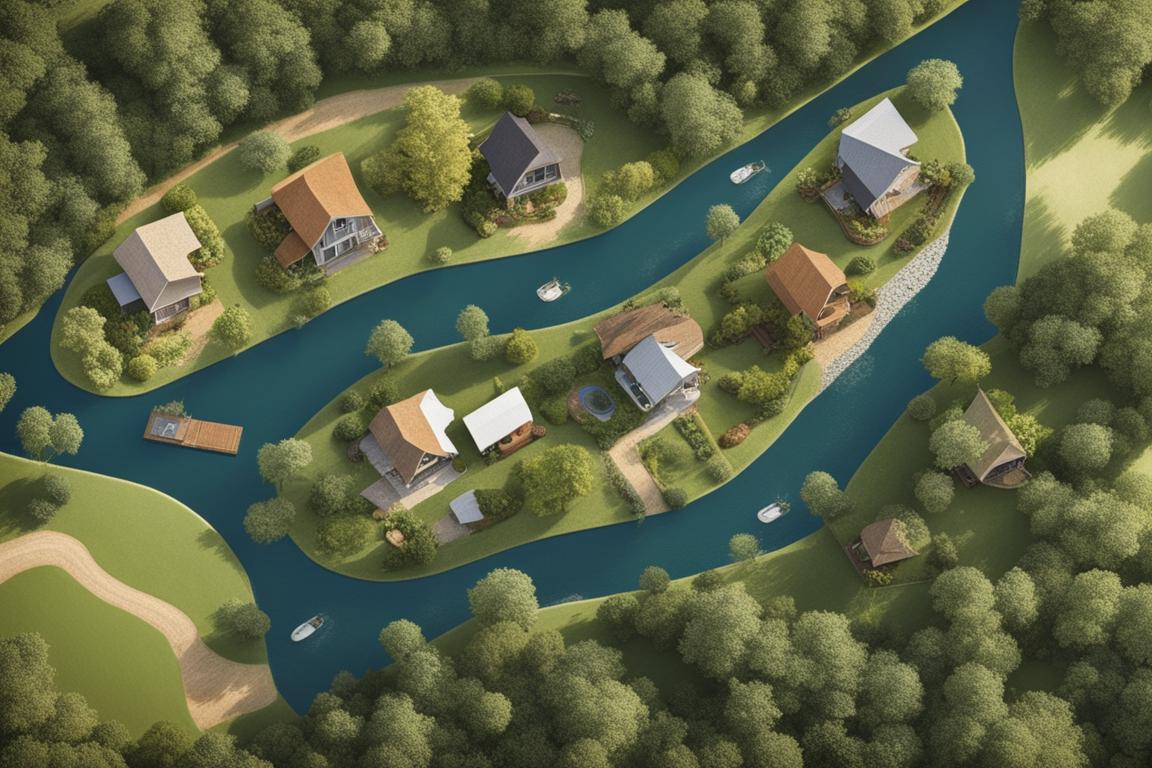
Finding the Right Land
Factors to consider when searching for suitable land for a tiny house
When searching for land to build a tiny house, several factors need to be taken into account. These include the cost of the land, proximity to amenities, accessibility, and the natural features of the location. Additionally, considerations such as soil quality, topography, and available sunlight should be evaluated to determine the suitability of the land for building a tiny house.
Proximity to utilities, amenities, and cost of land
The proximity to essential utilities such as water, electricity, and waste management services is crucial when evaluating potential land for a tiny house. Access to amenities such as grocery stores, healthcare facilities, and emergency services should also be factored in. Moreover, the cost of the land and its impact on the overall budget for building a tiny house need to be carefully assessed.
Assessing the suitability of the location for tiny house living
Beyond practical considerations, the location’s suitability for tiny house living should align with the desired lifestyle and values. Factors such as community atmosphere, natural surroundings, and the potential for sustainable living practices should be evaluated to ensure a harmonious fit for building a tiny house on the chosen land.
Evaluating and Purchasing Land
Assessing soil quality, topography, and environmental impact
Conducting a thorough assessment of the soil quality, topography, and environmental impact of the land is essential to determine its suitability for building a tiny house. Understanding the land’s natural features and potential environmental challenges is critical for planning the construction and minimizing ecological disruption.
Financing options and challenges for purchasing land for a tiny house
Financing the purchase of land for a tiny house can present unique challenges, as traditional mortgage lenders may be hesitant to finance land without existing structures. Exploring alternative financing options, such as land loans or seller financing, may be necessary to secure the land for building a tiny house.
Legal considerations when acquiring land for a tiny house
Legal considerations, including property boundaries, easements, and land use restrictions, need to be carefully examined before finalizing the purchase of land for a tiny house. Engaging legal professionals with experience in real estate transactions can provide valuable guidance and ensure a smooth acquisition process.
Off-Grid vs. On-Grid Living
Advantages and challenges of off-grid living for a tiny house
Off-grid living offers the allure of self-sufficiency and independence from traditional utility providers. However, it comes with challenges such as setting up alternative energy sources, managing water supply, and waste disposal. Assessing the practicality and sustainability of off-grid living is crucial when considering this option for a tiny house.
Implications for utility access, sustainability, and cost
The choice between off-grid and on-grid living for a tiny house has implications for utility access, environmental sustainability, and long-term cost considerations. Understanding the trade-offs between self-reliance and convenience is essential when designing and planning for the utilities of a tiny house on land.
Considerations for on-grid living and its impact on design and lifestyle
Opting for on-grid living offers the convenience of readily available utilities but may require specific design considerations to accommodate connections to water, electricity, and sewage systems. Exploring the impact of on-grid living on the design and lifestyle of a tiny house is crucial for creating a comfortable and sustainable living space.
Designing for the Land
Importance of designing a tiny house that complements the natural features of the land
Designing a tiny house that harmonizes with the natural features of the land not only enhances the aesthetic appeal but also minimizes the ecological impact. Orienting the house for optimal solar gain, preserving natural vegetation, and integrating with the landscape can contribute to sustainable and visually pleasing design.
Orientation for solar gain, landscaping, and minimizing environmental impact
Strategic orientation of the tiny house for solar gain, integrating landscaping to enhance energy efficiency, and minimizing disruption to the natural environment are key considerations in sustainable design. Thoughtful design choices can lead to a more energy-efficient and environmentally sensitive living space.
Incorporating sustainable design elements into the tiny house
Incorporating sustainable design elements, such as passive solar features, energy-efficient appliances, and recycled materials, can enhance the sustainability of a tiny house. Embracing sustainable design practices not only reduces environmental impact but also contributes to a healthier and more efficient living environment.
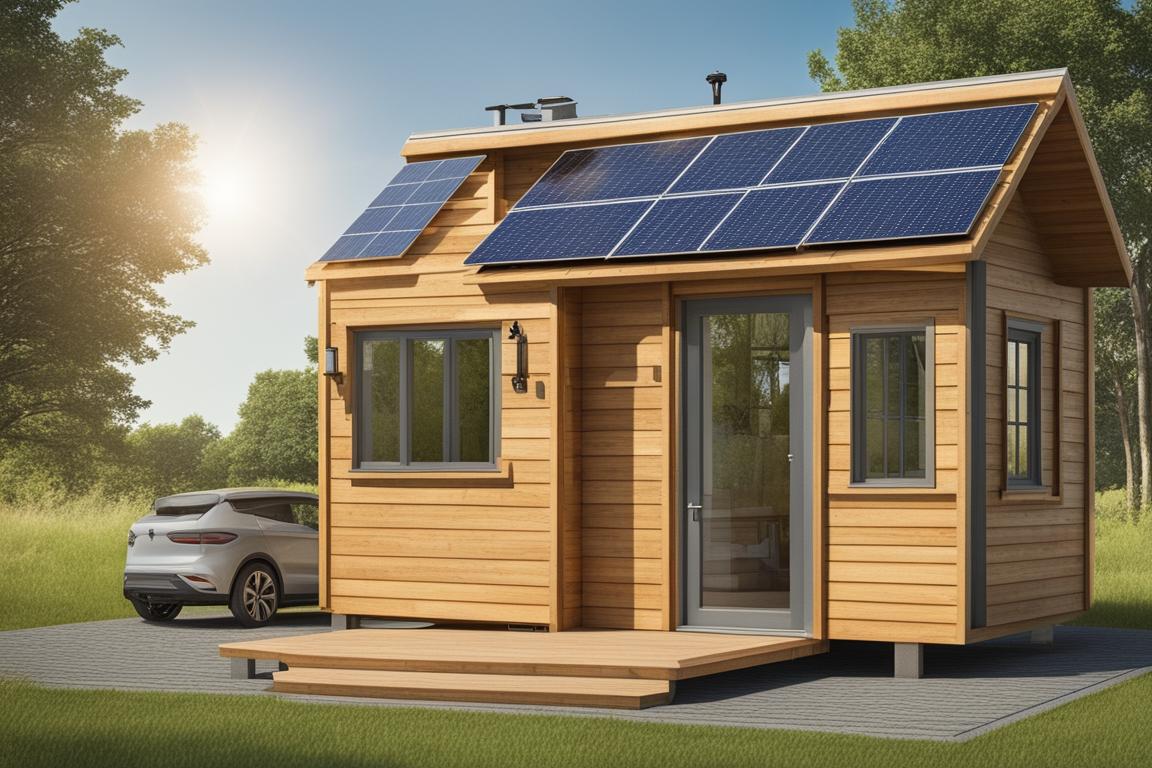
Infrastructure and Utilities
Setting up essential utilities such as water, electricity, and waste management
Establishing essential utilities for a tiny house on land involves carefully planning for water sources, electricity supply, and waste management systems. Assessing the feasibility and cost of connecting to existing utility infrastructure or implementing alternative solutions is essential for long-term sustainable living.
Options for alternative energy sources and sustainable water solutions
Exploring alternative energy sources, such as solar panels or wind turbines, and sustainable water solutions, such as rainwater harvesting or well water, can contribute to a more self-sufficient and eco-friendly lifestyle. Evaluating the practicality and long-term sustainability of these options is crucial for off-grid or environmentally conscious living.
Cost considerations and long-term sustainability of chosen utilities
Balancing the upfront costs of implementing utilities with their long-term sustainability and operational expenses is essential for financial planning and environmental stewardship. Choosing cost-effective and sustainable utility solutions can contribute to the overall feasibility and success of living in a tiny house on land.
Legal and Financial Implications
Property taxes, insurance, and other financial aspects of owning land for a tiny house
Owning land for a tiny house entails financial considerations such as property taxes, insurance, and potential maintenance costs. Understanding the financial obligations and planning for these expenses is essential for sustainable land ownership and long-term financial stability.
Restrictions on land use and legal considerations for tiny house living
Navigating legal restrictions on land use, adherence to zoning regulations, and potential limitations on tiny house living is crucial for avoiding legal disputes and ensuring compliance with local laws. Seeking legal guidance and staying informed about evolving regulations are vital aspects of responsible land ownership.
Crafting legal agreements and contracts for land use
Crafting legal agreements and contracts for land use, such as lease agreements or easements, requires attention to detail and a clear understanding of the rights and responsibilities of all parties involved. Engaging legal professionals to draft and review these documents can provide clarity and protection for all parties.
Community Integration
Impact of building a tiny house within an existing community or neighborhood
Integrating a tiny house into an existing community or neighborhood requires thoughtful consideration of the local culture, regulations, and community dynamics. Understanding and respecting the norms and expectations of the community is essential for fostering positive relationships and a sense of belonging.
Building relationships with neighbors and local organizations
Building meaningful relationships with neighbors and local organizations can enhance community integration and support. Open communication, mutual respect, and active engagement with the community can contribute to a harmonious living experience for individuals choosing to build a tiny house on land.
Engaging with the community and addressing concerns
Engaging with the community, addressing concerns, and participating in local initiatives can foster a sense of belonging and mutual support. Proactive involvement in community activities and addressing any potential concerns can contribute to a positive and sustainable living experience.
Personal Experience: Overcoming Zoning Challenges
When Sarah and Jack decided to build their tiny house on a piece of land they purchased, they were met with unexpected zoning challenges. Despite thorough research, they discovered that the land was zoned for larger structures, and their tiny house did not meet the minimum square footage requirement.
Sarah and Jack navigated this obstacle by reaching out to local officials and presenting a well-prepared case for an exception to the zoning regulations. They highlighted the sustainable and environmentally friendly aspects of their tiny house and its compatibility with the surrounding landscape. After several meetings and discussions, they successfully obtained a variance that allowed them to proceed with their plans. This experience taught them the importance of proactive communication and perseverance in overcoming zoning hurdles, ultimately leading to the realization of their dream of sustainable tiny house living.
Construction Approaches
Benefits and challenges of DIY construction versus hiring professionals
Deciding between do-it-yourself (DIY) construction and hiring professionals for building a tiny house involves weighing the benefits of cost savings, customization, and hands-on involvement against the challenges of time commitment, skill requirements, and potential setbacks.
Required skills, resources, and potential cost savings of each approach
Assessing the required skills, resources, and potential cost savings of each construction approach is essential for making an informed decision. DIY construction may require a diverse skill set, while hiring professionals can provide expertise and efficiency, albeit at a higher cost.
Ensuring safety and compliance with building codes and regulations
Ensuring safety and compliance with building codes and regulations is paramount, regardless of the chosen construction approach. Prioritizing structural integrity, electrical safety, and adherence to local regulations is crucial for the long-term livability and legal compliance of the tiny house.
Long-Term Sustainability
Maintenance, land stewardship, and potential for future expansion or resale
Long-term sustainability of a tiny house on land involves proactive maintenance, responsible land stewardship, and considerations for potential future expansion or resale. Planning for the upkeep and potential evolution of the living space contributes to its enduring sustainability.
Sustainable practices and minimizing environmental impact in the long term
Embracing sustainable practices, such as energy and water conservation, waste reduction, and ecological restoration, is essential for minimizing the long-term environmental impact of living in a tiny house on land. Cultivating a mindful and ecologically sensitive lifestyle contributes to the overall sustainability of the living arrangement.
Adapting to changing needs and lifestyle over time
Adaptability and flexibility in responding to changing needs and lifestyle preferences over time are key aspects of long-term sustainability. Designing the tiny house and living practices to accommodate evolving circumstances and priorities ensures its relevance and usability in the long term.
Environmental Impact and Ethics
Responsible land stewardship and conservation in tiny house living
Responsible land stewardship involves minimizing ecological disruption, preserving natural habitats, and promoting biodiversity. Embracing conservation practices and ethical land use contributes to the environmental integrity of tiny house living.
Minimizing environmental impact and adhering to sustainable practices
Minimizing environmental impact through sustainable practices, such as energy-efficient design, waste reduction, and ecological restoration, is a fundamental ethical consideration in tiny house living. Striving to minimize carbon footprint and ecological footprint aligns with the ethical principles of sustainable living.
Ethical considerations in land use for tiny house living
Ethical considerations in land use for tiny house living encompass respect for natural ecosystems, responsible resource management, and a commitment to preserving the ecological balance. Aligning land use practices with ethical principles contributes to a conscientious and sustainable approach to tiny house living.
Access to Services and Amenities
Considerations for access to essential services and amenities
Assessing the accessibility of essential services, such as healthcare, grocery stores, and emergency services, is vital for ensuring a comfortable and secure living environment. Proximity to these services contributes to the overall convenience and practicality of the chosen location for a tiny house on land.
Healthcare, grocery stores, and emergency services in proximity to the chosen land
Access to quality healthcare facilities, reliable grocery stores, and responsive emergency services is essential for meeting the daily needs and ensuring the safety of individuals living in a tiny house on land. Evaluating the availability and proximity of these services is crucial for sustainable and resilient living.
Assessing the convenience and practicality of the chosen location
Assessing the convenience and practicality of the chosen location involves considering factors such as commuting distance, access to public transportation, and the availability of community resources. Choosing a location that aligns with daily lifestyle needs contributes to the overall quality of living in a tiny house on land.
Financial Planning
Financing options for purchasing land and building a tiny house
Exploring financing options, such as land loans, construction loans, or personal savings, is essential for securing the necessary funds to purchase land and build a tiny house. Understanding the financial implications and planning for the associated costs is crucial for successful implementation.
Creating a comprehensive budget for site preparation and infrastructure costs
Creating a comprehensive budget that accounts for site preparation, utility installations, and construction expenses is essential for financial planning. Accurately estimating these costs and accounting for potential contingencies contributes to the financial feasibility of building a tiny house on land.
Managing expenses and ensuring financial feasibility
Managing ongoing expenses, tracking costs, and ensuring financial feasibility throughout the process of building and living in a tiny house on land is essential for long-term financial stability. Proactive financial management contributes to a sustainable and rewarding living experience.
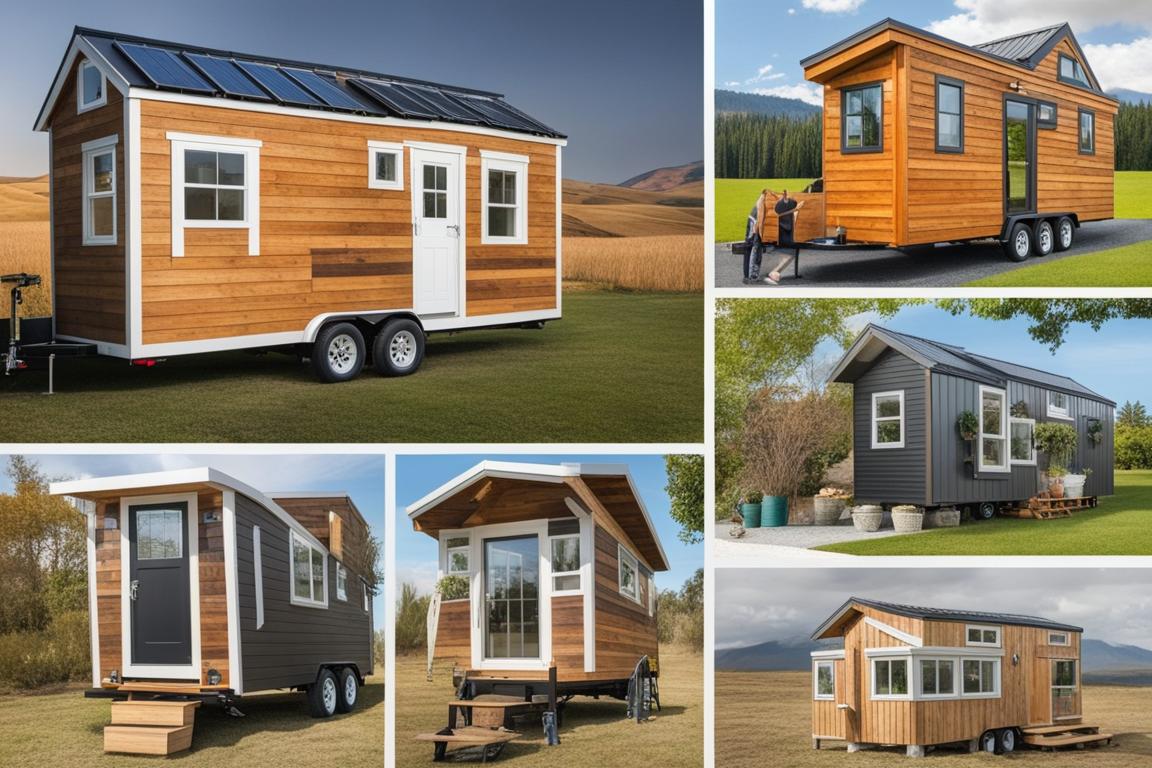
Case Studies and Success Stories
Real-life examples of successful tiny house living on land
Real-life examples of individuals and families successfully living in tiny houses on land offer valuable insights and inspiration. Exploring these case studies provides practical knowledge, showcases innovative solutions, and highlights the diverse paths to sustainable tiny house living.
Challenges, achievements, and lessons learned from individuals and families
Understanding the challenges, achievements, and lessons learned from individuals and families living in tiny houses on land provides a holistic perspective on the realities of this lifestyle choice. Gaining insights into the practical considerations and emotional experiences enriches the understanding of sustainable tiny house living.
Inspirational stories of sustainable and fulfilling tiny house living experiences
Inspirational stories of sustainable and fulfilling tiny house living experiences showcase the transformative potential of embracing a simpler, more sustainable lifestyle. These stories offer encouragement, highlight the rewards of mindful living, and underscore the positive impact of tiny house living on individuals and communities.
Conclusion
Building a tiny house on land requires careful consideration of local regulations, land suitability, sustainable design, infrastructure, legal and financial implications, community integration, construction approaches, long-term sustainability, environmental impact, access to services, financial planning, and real-life examples.
Embracing sustainable and mindful living in a tiny house on land offers the opportunity to reduce environmental impact, simplify life, and foster a deeper connection with nature. Encouragement for individuals considering this lifestyle choice underscores the potential for a fulfilling and conscientious living experience.
Common Questions
Who can build a tiny house on land?
Anyone can build a tiny house on land with proper permits and zoning approval.
What are the regulations for building a tiny house on land?
Regulations vary by location, but generally, you’ll need permits and compliance with zoning laws.
How do I find land for building a tiny house?
You can find land for building a tiny house by searching online listings or contacting local real estate agents.
What if I can’t find land for my tiny house?
If you can’t find land, consider reaching out to local landowners to inquire about potential opportunities.
How can I access utilities when building on land?
You can access utilities by working with local service providers to install water, electricity, and sewage connections.
What if zoning laws don’t allow tiny houses on land?
If zoning laws don’t permit tiny houses, consider petitioning for a zoning variance or exploring alternative locations.
With over a decade of experience in sustainable architecture and land development, Ava Thompson is a recognized expert in the field of tiny house living. Holding a Master’s degree in Sustainable Design and Green Building, Ava Thompson has conducted extensive research on the environmental impact of small-scale housing and has published numerous articles in reputable journals such as the Journal of Sustainable Development. Their work is informed by hands-on experience, having collaborated with various communities to implement sustainable housing solutions.
Ava Thompson has also been involved in several case studies focusing on successful tiny house living on land, providing practical insights and lessons learned from real-life examples. Additionally, Ava Thompson has been a keynote speaker at sustainability conferences, advocating for responsible land stewardship and ethical considerations in land use for tiny house living. Their expertise in navigating local regulations, zoning, and infrastructure for off-grid and on-grid living makes them a trusted voice in the tiny house community.
